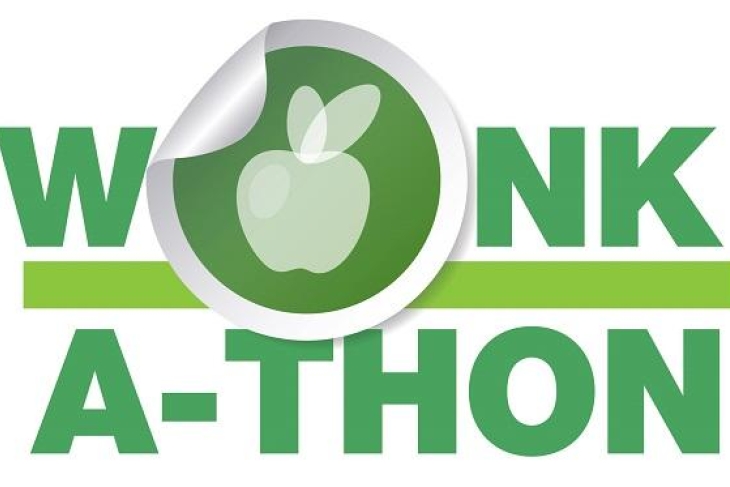Editor's note: This post is a submission to Fordham's 2018 Wonkathon. We asked assorted education policy experts whether our graduation requirements need to change, in light of diploma scandals in D.C., Maryland, and elsewhere. Other entries can be found here.
Recently reported “scandals” surrounding graduation rates are a ripe opportunity to tackle a persistent problem in high schools across America. But the real scandal is the fact that a high school diploma—the tangible result of graduation—has become a bland assurance of young adults’ readiness to succeed in college and career.
What should “readiness” mean in 2018 in the United States? We know that 65 percent of jobs by the year 2020 will require a postsecondary credential (which could mean a bachelor’s degree, an associate degree, a series of industry recognized credentials, or technical college training tied to employment and wage earnings). And the most highly-valued credentials are attained at the postsecondary level. Therefore, “readiness” in 2018 means readiness for college and career. Those who argue for alternate high school CTE pathways devoid of postsecondary instruction overlook both what employers need as well as the growing number of states, districts, and schools offering robust, industry-valued pathways aligned to middle- and higher-wage jobs. These rigorous pathways feature dual credit or AP courses as a requirement (not an option), industry-recognized certifications, and seamless transitions to postsecondary programs.
How do we currently represent readiness? For most students, graduation requirements represent a checklist of discrete course requirements that they must “pass” (C, D, or better) to earn a diploma. The problem is that the completion of these requirements does not guarantee that students master the skills and content that will open doors of opportunity to postsecondary and long-term career success. Furthermore, they provide no assurance that students engage in authentic experiences that provide the “soft skills” employers clamor for.
Instead, students endure instruction at a lock-step pace that produces a hodge-podge of incomplete content knowledge and skills. Issuing credits and diplomas based on seat-time and sometimes only barely passing grades continues to send false signals of readiness to students.
As a core function of high schools’ structure, there are too few opportunities to address content and skill deficits, and too few opportunities to advance to more rigorous concepts and skills when ready. Under this approach, the goal of college and career readiness is at odds with the current structure and delivery of curricula in high school.
Improving the value of high school requires rethinking and changing the student experience. Here are three steps to doing just that:
- Clearly establish what it means to be a high school graduate. States like South Carolina and Virginia are taking steps down this road with their “Portrait of a Graduate” initiatives. These portraits outline the skills, knowledge, and experiences students should master in high school. The value in the development of a Portrait of a Graduate is the involvement of and ultimate agreement about expectations among all key stakeholders, including higher education and the business community. States can take that a meaningful step further by identifying the most in-demand pathways to college and career in the state or region (see number two for more on this). Parents and students need to be able to connect, much earlier and more directly, critical expectations for graduates to the broader career options available to them in order to make high school relevant and purposeful to their interests and goals.
- Develop robust, focused pathways of sequential courses and experiences that students can choose from when they enter high school. These could include STEM, liberal arts, and a range of industry-valued CTE options, among others. Some states like Texas have embraced this approach through “endorsements” (focused areas of study). But we can and must go further than revamping the checklist of courses required. Pathways must include experiences such as research projects, internships, and apprenticeships that connect students’ classroom learning with relevant real-world problems and workplace contexts. They must also be directly aligned to a range of postsecondary programs to ensure a seamless transition to credentialing beyond high school. Dual credit, AP courses, industry-recognized credentials, and computer science should be promoted non-negotiables of such pathways. (States can incentivize attainment of college credit, work-based learning experience, and credentials to spur this change.)
- Transition from seat-time to mastery-based instruction. We must finally acknowledge that C’s and D’s are simply band-aids for incomplete learning. Making this transition means using assessments more strategically to understand where students fall on a continuum of learning—and then providing instruction and support to help them advance and master course content and skills. As others have noted, this may mean allowing additional time for some students to graduate. But ensuring those graduates have the support to reach a level of mastery with that additional time makes more sense than providing a five- or six-year window to simply “pass” and acquire the same lackluster diploma.
While these steps are not trivial, they are achievable. Indeed, many states that my organization, ExcelinEd, works with are already providing the flexibility for schools to focus on mastery-based instruction and the incentives to develop strong college and career pathways. Yes, there will likely need to be changes made to accountability systems and even graduation requirements themselves, but these changes should be made in concert with practical implementation of the steps above, not used as an excuse for inaction. With a few major steps, high school diplomas—and yes, graduation rates—could become serious metrics of long-term student success. The true scandal is that they aren’t—and won’t be until we do something about it.

